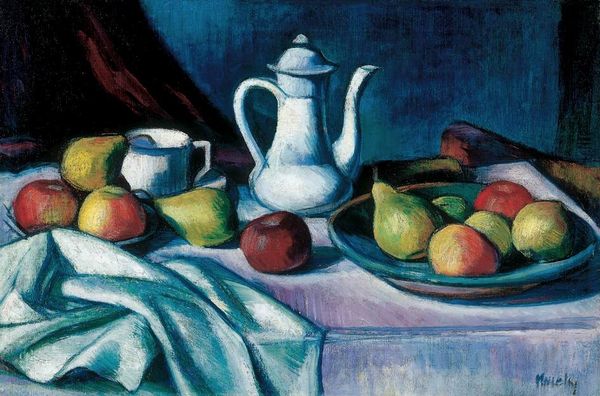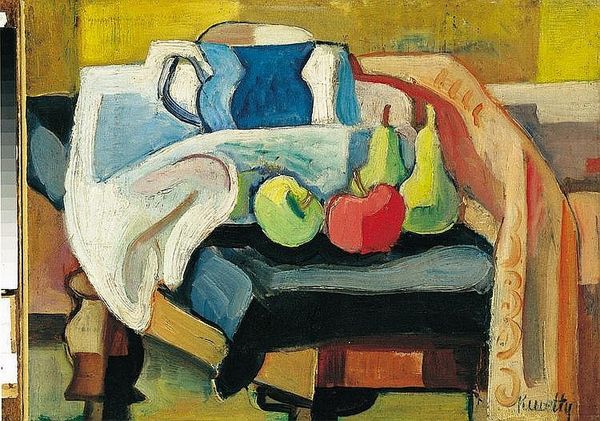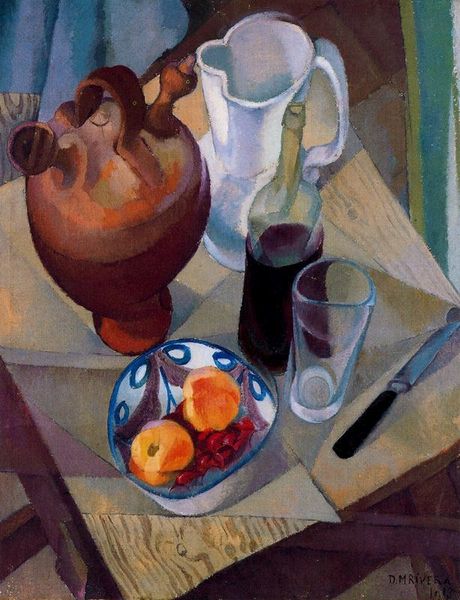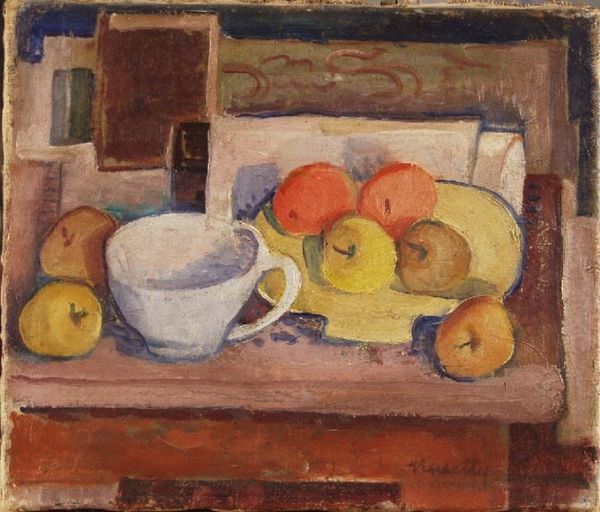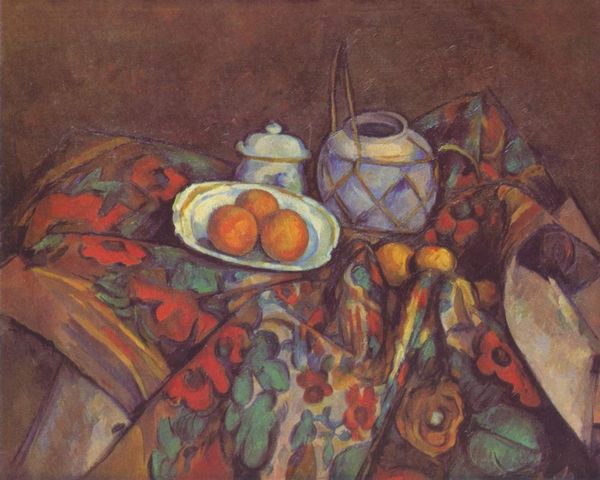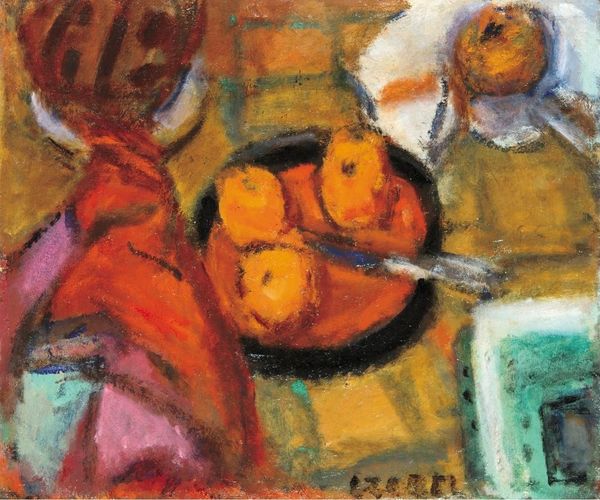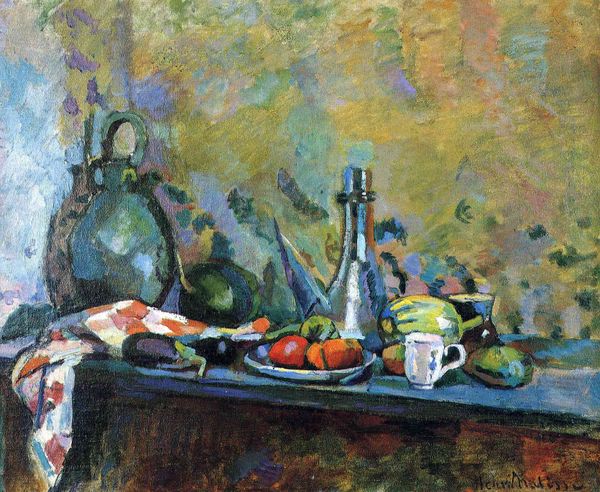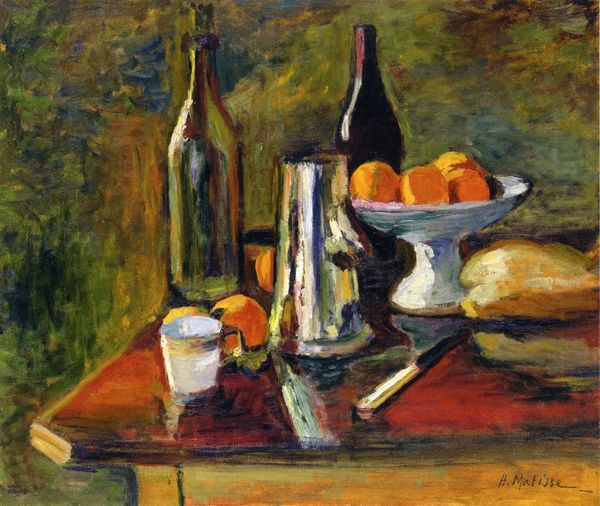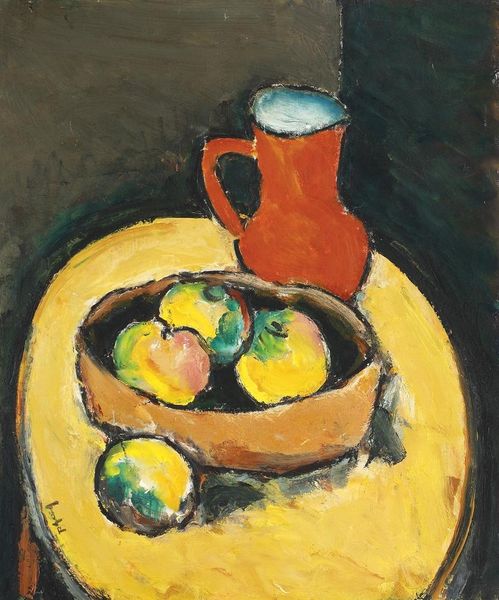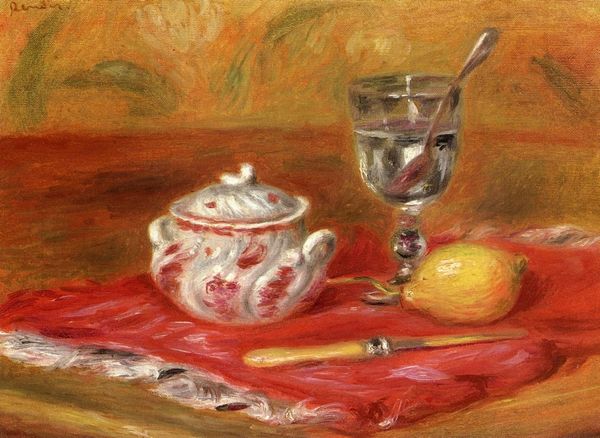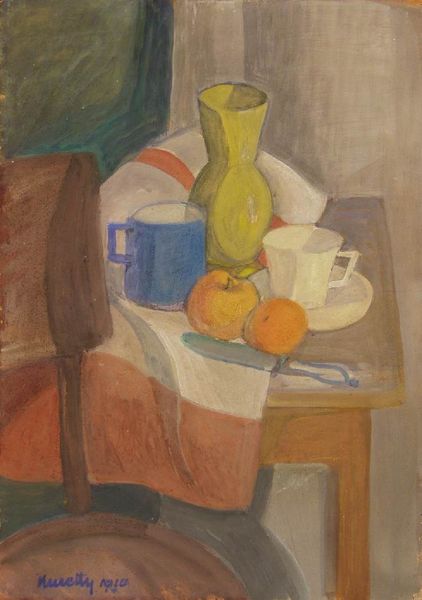
oil-paint, photography, impasto
#
still-life
#
oil-paint
#
photography
#
impasto
#
post-impressionism
Copyright: Kmetty János,Fair Use
Curator: Let’s dive into János Kmetty's "Still Life with Table and Chairs", an oil painting that seems rooted in the post-impressionist movement. What strikes you most about this work? Editor: Well, immediately, it’s the textures. The impasto is very evident, and I notice the table seems to almost crowd the frame and the chairs are tilted oddly, and, almost feel like observers of some kind. What do you make of that dynamic? Curator: I find that observation astute. The composition isn't just about arranging objects; it's a presentation, almost theatrical. Knowing Kmetty's place within the Hungarian art scene – heavily influenced by social realism and a desire to depict everyday life – this ‘stage’ becomes incredibly interesting. How might the presentation itself reflect socio-political commentary of the time? Editor: That makes me wonder about what’s missing…like who would be sitting at this table? Curator: Exactly! This emptiness emphasizes the social absence but consider also the politics of imagery. The bold, almost crude impasto technique popular at the time may suggest an appeal to a common class or maybe working class. Kmetty chose common elements of a family dinner. Considering the socio-political implications during the time, this feels purposeful, maybe confrontational. Would you agree? Editor: Yes, definitely, this painting offers not only a study in form, but a social tableau. Seeing it now, I learn there are so many socio-historical details embedded within what I thought was a simple still life. Curator: Absolutely. Art serves as a reflection of its socio-political background.
Comments
No comments
Be the first to comment and join the conversation on the ultimate creative platform.
